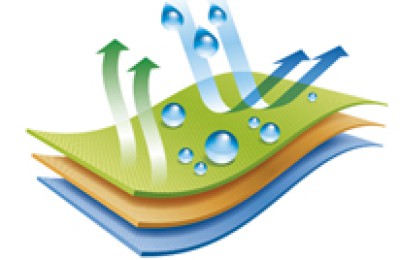On June 18, the heads of state of China and the United States exchanged phone calls, and the two sides agreed to meet again during the G20 Osaka Summit to conduct in-depth communication on bilateral relations and other issues.
Affected by this, there was a surge in global capital markets. The RMB once appreciated by 400 basis points during the session, and the Nasdaq index also rose by more than 100 basis points. 2%.
200 billion! From 10% to 25%! Exports to the United States dropped significantly
On May 10, the United States raised tariffs on $200 billion of Chinese exports to the United States from 10% to 25%, involving China’s use of U.S. textiles and apparel The export value was approximately US$10.3 billion, accounting for 22.6% of China’s exports of textiles, apparel and raw materials to the United States, involving about 20,000 export companies. China immediately took countermeasures.
Affected by the intensification of trade frictions, in the first five months of this year, the United States dropped from my country’s second largest trading partner to the third largest trading partner. The total trade value between China and the United States was 1.42 trillion yuan, a decrease of 9.6%. , accounting for 11.7% of our total foreign trade value. Among them, exports to the United States were 1.09 trillion yuan, down 3.2%.
For textile companies, the experience is even more profound. Affected by the excessive growth of water-jet loom production capacity in peripheral areas, the entire textile market was in a relatively sluggish cycle in the first half of this year. The intensified trade friction between China and the United States has caused an even worse blow.
In previous market research, Manager Wu, the person in charge of a weaving company that produces imitation silk in Wujiang, said that under the pressure of 25% tariff on foreign trade, even if the market is not good now, gray fabrics, The prices for printing, dyeing and finishing have been slightly lower than in the previous period, but it still had a great impact on order acceptance. Many orders were unable to be accepted by customers due to the 25% tariff. In the past two months, fabric exports to the United States have The number has been reduced a lot.
Loose-lose! Reducing tariffs has become the common aspiration of Chinese and American companies
Whether the 25% tariff can be reduced may be the issue that textile companies are most concerned about at the moment.
Affected by insufficient demand from the terminal garment industry, the current average inventory of weaving companies has reached a historical high of more than 40 days. Some companies have even made the decision to “take summer vacation”, and corporate funds The pressure is great, and selling is common in the market.
But at the same time, life in the United States is not easy either.
On June 17, the Office of the U.S. Trade Representative held a seven-day hearing on the U.S. plan to impose additional tariffs on approximately $300 billion of Chinese goods exported to the United States. Representatives from many parties raised questions about this Objections.
The previous 200 billion list has already had a huge adverse impact on the normal production and operations of American companies.
Helfen Bay, president of the American Apparel and Footwear Association, said in an interview, “The 25% tariff has given us a blow. If we can move more production out of China, we will We will do this, but we have been unable to do so.”
Schneider, CEO of fashion brand Katniss Cole, also said that the impact of the 25% tariff on the company’s profits and costs is devastating. of. “In addition to lowering product quality and raising product prices, we will get nothing by moving to other countries.”
It can be said that the 25% tariff brings a lose-lose result. And reducing tariffs has become a common wish of Chinese and American companies.
Once tariffs are loosened, exports to the United States may usher in a peak
I wonder if you still remember that freighter full of soybeans that ran wildly? Traders are always racking their brains to reach their destination before tariffs are imposed.
Once the 25% tariff is loosened, it may lead to a wave of concentrated shipments of textiles.
Compared with Chinese textile and clothing products, prices in Southeast Asia may be cheaper, but product quality cannot be very well guaranteed. It can be said that Chinese textiles are still synonymous with high quality and low price, and they play an irreplaceable role in the international market.
But because the attitude of the United States is wavering, no one can guarantee whether there will be another disturbance.
Therefore, if tariffs are loosened, I believe many companies will choose to “take it easy” and import a large amount of Chinese textiles when tariffs are low. By then, China’s exports to the United States will decline in a short period of time. Maybe there will be a peak.
The rebound of polyester yarn is accelerating, can weaving companies…�Salted fish turn over”
At present, both PTA and ethylene glycol have futures attributes. When the RMB and the stock market are soaring, the prices of raw materials will naturally Not to mention too much.
On June 19, the closing price of the main 1909 contract of PTA futures was 5574 points, a sharp increase of 212 points or 3.95% from the previous trading day.
In terms of polyester production and sales, on June 19, the production and sales of polyester factories reached around 240%-270%, and the production and sales of some factories even reached more than 400%.
According to the price monitoring of China Silk Capital Network, starting in May this year, polyester filament prices experienced a wave of decline first and then stabilization. In early June this year, the price of polyester filament fell to a historical low since 2016, and then began to There has been a steady rebound, and the recent benefits brought by trade may accelerate the rebound of polyester yarn prices.
For weaving companies, in the case of high inventories, the increase in raw materials can stabilize the decline in gray fabrics. Prices, if the tariffs can really be relaxed and bring about a wave of market trends, it may really be able to wipe out the decline in the first half of this year and completely turn around!
Remain cautiously optimistic and make your own products
But at the same time, the heads of state of China and the United States are currently on the phone The content is only that they agree to meet again during the Osaka Summit of the G20 leaders, but it is still unclear what the final result of the meeting will be.
China has always upheld friendly exchanges, mutual benefit and win-win results Under the attitude of the United States, the attitude of the United States has been wavering.
On December 1 last year, the heads of state of China and the United States also met in Buenos Aires, Argentina. At that time, China and the United States The two sides reached a consensus on economic and trade issues and decided to stop escalating tariffs and other trade restrictive measures. However, in May this year, the United States unilaterally imposed an additional 25% tariff.
Therefore, for this meeting In the end, we still need to maintain a cautiously optimistic attitude.
For textile companies, China and the United States The easing of trade frictions may bring about a wave of market conditions and alleviate the current situation slightly. However, in the next two years, the production capacity of water-jet looms in peripheral areas will still be in an explosive period, and the oversupply situation remains unchanged. Textile companies should still Improve product quality and make long-term plans to meet future challenges. </p



